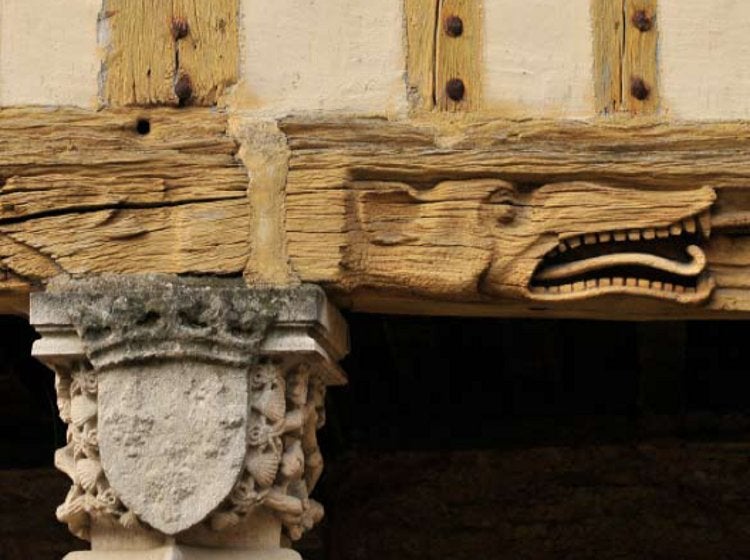
There may be no bad vintages in Burgundy any more, but all the more interest, therefore, surrounds the personality, as well as the quality, of each new year. And the barrel samples offered for tasting before the annual Hospices de Beaune auction each November afford the first glimpse of the baby faces of the nascent wines. So, what can we expect of the rather topsy-turvy 2011 vintage, and what can we expect to pay for the wines, based on the results of the sale and the latest statistics from the Bureau Interprofessionnel des Vins de Bourgogne (BIVB)?
The spring of 2011 was drier and warmer than normal, while the summer was cooler and wetter, with dramatic rainstorms in July and August. Benign conditions returned in time for the harvest in September, but rigorous grape selection was necessary. Anthony Hanson MW – an authority on Burgundy and senior consultant for Christie’s, which has organized the Hospices de Beaune sale since 2005 – said of its wines, “The reasonable yields in the Hospices de Beaune vineyards, combined with severe sorting, both in vineyards and winery, to remove any less-than-perfect grapes, allowed red wines of real quality to be produced.
These are deeply colored, with fresh aromas recalling red and black fruits; and palate structures, allied to fruit densities, are remarkable. Many red wines will be delicious when youthful, and those coming from the greatest vineyard sites will certainly age magnificently. The white wines are intensely fruity, harmonious, and racy.”
Not all of the wines were showing well at the presale tasting, due mostly to the inevitably incomplete state of the vinifications. But three of the Pommard cuvées — Billardet, Premier Cru Epenots Dom Goblet, and Premier Cru Dames de la Charité — stood out, backing up the claim of Roland Masse, general manager and winemaker, that this Côte de Beaune village is a coup de coeur this vintage. The exceptional Monthélie Premier Cru Cuvée Lebelin similarly supported Anthony Hanson’s suggestion that there will be “modestly priced cuvées for everyday pleasures.”
No robbing Peter to pay Paul
On the day of the auction – Sunday, November 20, 2011 — average barrel prices fell by comparison with the previous year: down 6 percent for red wines and 13 percent for white wines. This almost certainly had less to do with the way the wines had showed the day before than with the increases for the 2009s and 2010s, as well as the higher volume of wine than in 2010 (761 barrels compared to 647 barrels) and the general uncertainty in the global economy.
All 618 barrels of red wine (across 32 cuvées) and 143 barrels of white wine (13 cuvées) were sold, for a total of €5,289,973 ($7,199,653/£4,538,797), including premiums; the Presidents’ Barrel (traditionally sold for the benefit of other charities) and eaux-de-vie took the overall total to €5,402,333 ($7,352,575/£4,635,202), including premiums.
This was close to the record total reached in 2009, so prices held up fairly well, and even the fall in the average price was welcomed by some in the trade. Albéric Bichot – head of Beaune-based négociant Maison Albert Bichot, again the largest buyer at the sale — commented, “After two consecutive years of sharp increases, this price decrease was necessary. If Burgundy is to continue to attract attention from wine lovers, it is necessary for us to remain reasonable.”
The auction did attract wide interest, with almost 300 bidders (including 49 online through Christie’s Live) from 23 countries. Bichot bought the top lot – the President’s Barrel, 460 liters of Corton Clos du Roi Cuvée Baronne du Bäy – on behalf of London-based Antique Wine Company, for €110,000 ($149,710/£94,380), the proceeds going to charities France Alzheimer and Mécénat Chirurgie Cardiaque.
Of the other top-ten lots, four went to Asian buyers, two private and two trade, reflecting the interest in the event from China, where Beijing, Hong Kong, and Shanghai were among the cities where Christie’s had organized events in the run-up to the sale. Asian acquisitions represented 13 percent of the auction sales by value, up only slightly from 12.5 percent the year before. But the most recent statistics from the BIVB (to August 2011), released at the presale press conference, showed a far greater surge in interest in Burgundy from China and Hong Kong over the past year. Respectively, exports to these two were up 81 percent by volume, 103 percent by value, and 49 percent by volume, 109 percent by value, with the expectation that together they will become the sixth-largest export market for Burgundy over the next few months.
As Pierre-Henry Gagey, president of Maison Louis Jadot and acting chairman of the BIVB explained, however, this growth is from a low base, so “steady and sustainable.” And despite the very high prices at auction for a few of the most famous names (see pp.195-97), he emphasized that Burgundy did not want “artificial” growth in Asia, noting that Burgundy controls its distribution far more closely than Bordeaux does. He also promised that Burgundy would not “rob Peter to pay Paul” and would continue to serve its traditional markets, which remain many times larger overall. The UK is still the largest export market by volume but is down 13 percent by volume and 6 percent by value this year, while the USA has become the largest export market by value, up 39 percent by value and 25 percent by volume. Despite, or perhaps because of, strong demand for the 2009 and 2010 vintages, prices for the 2011s are likely to be stable.






